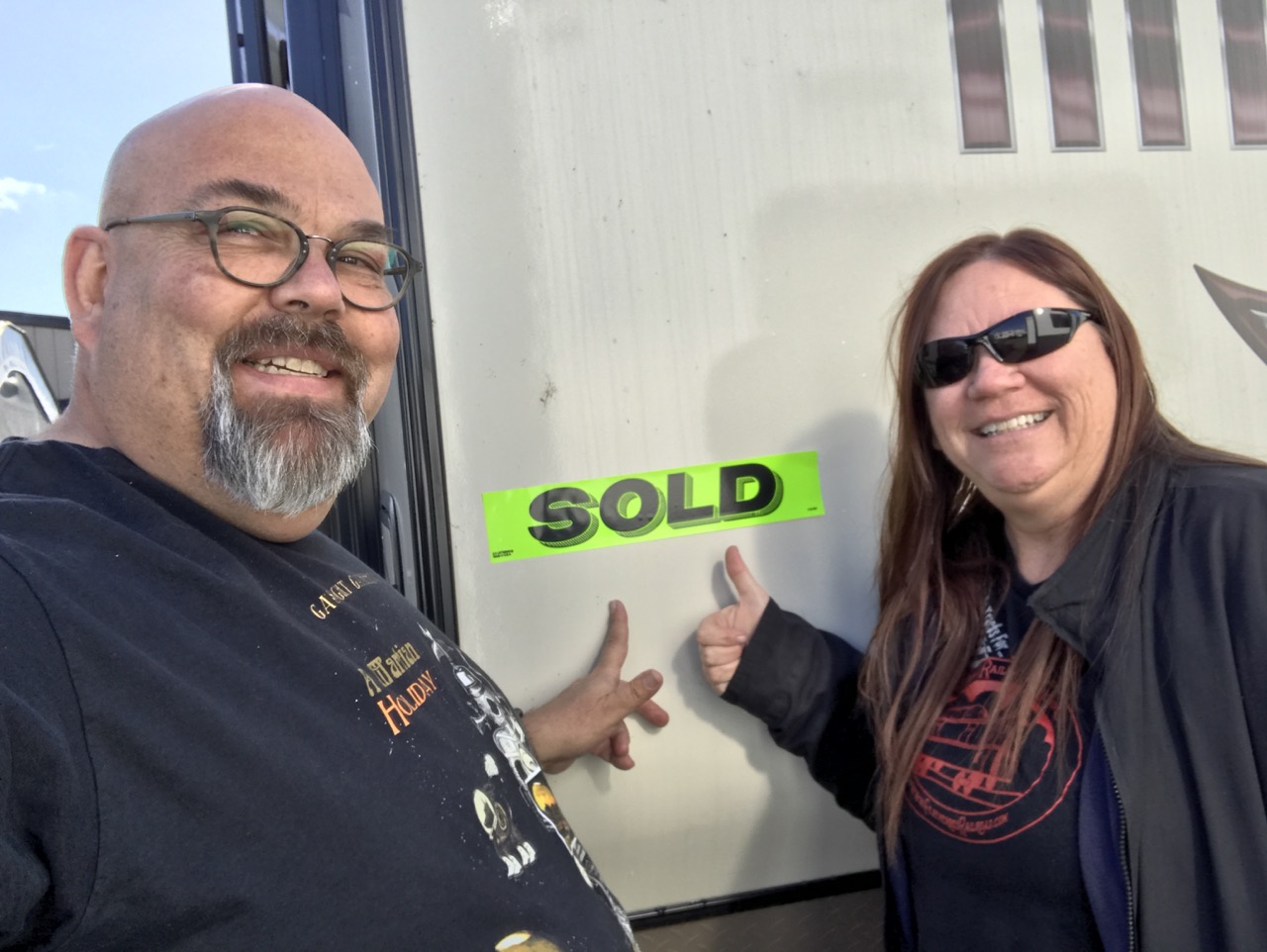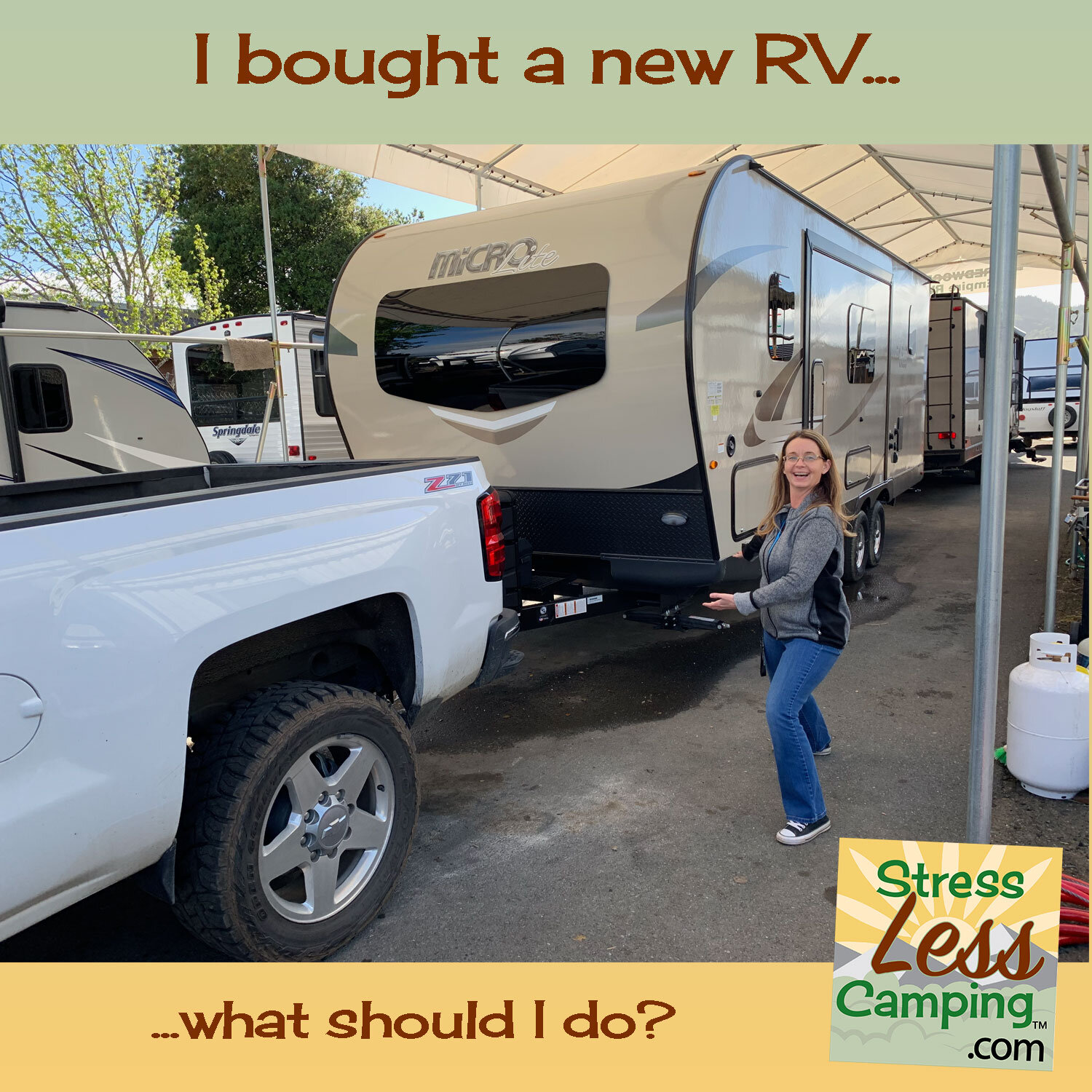How to take delivery of your new RV
Our years of RV dealership insider experience come together to help you with ten tips for picking up your new RV at the dealership. These tips can help you be a StressLess Camper.
Many Americans are turning to RVs as a safe way to travel in modern times. As such a lot of new people are getting RVs, many of whom have never owned RVs or even given them a second look in the past. These are ten tips for new RV owners before you even head out on your first journey - in fact before the RV even leaves the dealership.
RVs Are Different
As we’ve discussed in other articles and podcast episodes, RVs work differently than homes. While there are similarities, the way things happen can be significantly different from that same function at home. For example, RV refrigerators keep food cold but do so much differently than refrigerators in the home.
RV systems have to be able to work very, very efficiently from a variety of sources of energy and be able to withstand the rigors of trundling down the road. It is said that an RV traveling down the road is equivalent to a magnitude 4.5 earthquake while being pulled through a hurricane.
At the dealership
If you’ve already found your perfect RV and haven’t taken delivery of it yet, you’ve likely been asked by the dealership to schedule a walk through following their pre-delivery inspection or PDI. There isn’t really a benchmark for this kind of process but there are some guidelines.
Essentially a representative of the dealership is going to spend time with you explaining the systems in your new RV and how to take full advantage of all that that RV has to offer. The more involved you are in this process the more likely that your experience is going to be positive.
The best PDIs are those that happen with an individual from the dealership explaining how the systems work on your specific RV, the worst are a classroom environment on RVs in general. I will argue that you insist that the dealership spend time with you teaching you all the systems on your specific RV. Period.
Drinking from a fire hose
At the dealership I worked at we were a true team, with even the owner stepping in to make sure the customer experience was great.
While you might expect that you already know how water heaters and refrigerators and all of that work, you’re likely to be quite surprised at how differently RV systems work from the home. As such, absorbing the number of new things to learn with your specific RV can be like trying to drink from a fire hose.
You will also find that the more interest you take in understanding how these things work, the better your experience is going to be. It’s very wise to be familiar with these systems and how they work. Again, not like a home.
With that in mind I recommend having at least two individuals go through the walk-through with as few distractions as possible. If you have friends or relatives who want to experience your picking up your RV you are really doing yourself a disservice.
Also, if you have children who aren’t able to comprehend the walk-through (such as very young children) you might also consider a day with the grandparents if at all possible. While some tweens and teenagers are actually helpful in this process, younger children often get pretty bored and just want to leave. This is the last thing you need.
Whatever works best for you to trigger a memory should be part of this process. Peggy works best with a pen and paper, I like shooting video so that’s how we did our walk-through. If photos or writing or video or whatever is your best memory trigger, employ that. You’ll need it.
Test everything
During the walk through test everything and make sure that every system is functional. While a great dealership will have already done this, not all dealerships are equally thorough in their pre-delivery inspection.
Test the water system on both city water and on the RV’s internal pump. Your RV is able to function off-grid with an on-board water system that includes a water tank and a water pump. It can also work with water coming from a city water source. It’s best to test the function of both of these systems.
Check that the refrigerator cools on both AC and propane (assuming you have a two-way refrigerator). This will be a challenge as gas/electric refrigerators cool very slowly but you can tell if the propane system ignites.
Make sure the water heater heats on both gas and electric.
Check all the electrical outlets to make sure they’re working.
Turn on all the lights and check the switches
Try out all the fans
Make sure the entertainment systems are functioning properly and that you understand how they work. RV entertainment systems are odd.
Also understand how the antenna and cable systems work for the TV including the antenna booster, which many RVs have
Make sure you understand how the thermostat works. This might sound obvious, but many RVs feature a thermostat whose function is tricky (particularly the Dometic push button thermostat).
Try out the air conditioner to make sure it works and blows cold and make sure you know how to operate it
Try out the heater to make sure it blows hot and know how to turn this on. In some cases the RV’s main thermostat turns on the heater, other RVs may have a separate control.
Know how to operate the awning.
Some newer RVs have elaborate electronic systems for things like leveling and other functions. Make sure you understand these systems as well.
Make sure you understand the storage tanks for fresh water, gray water and black water and how to dump them. If your RV has a black tank flush, know how this works too.
RV black tank systems rely on a lot of water so know how to partially fill the toilet bowl before going “big potty” in it.
Know where your fuse box is and how to troubleshoot basic electrical issues.
Familiarize yourself with any solar systems on the RV.
Make sure you understand the emergency exits and share how these work with the people in your RV when you take it out. It’s actually a really good idea to practice using these systems regularly and hope that you never have to.
What if something isn’t right?
After you’ve looked over your beautiful new RV what if something isn’t right? Fortunately you haven’t taken delivery of it yet so now you have the power to make sure the dealership understands you want things fixed.
I will say that the dealership I worked at was very interested in making customers happy and did our best to test every system fully, but this isn’t true everywhere. Furthermore you may have things you discover in the walk-through inspection that were missed.
Depending on your state rules, you may be able to refuse to take delivery of the RV until the things that don’t work are taken care of. It may also be that the items that do need attention are minor enough that the dealer can fix them on the spot.
In the event that something did need parts or a warranty authorization from the manufacturer, your state may also have a provision for a signed promissory document between you and the dealership. This can be a binding document that promised that we would fix it and the customer knew that we were aware of the issue.
Either way, make sure that your dealership and you are aware of any known issues and that there is a written promise to resolve those. You should each get a copy of the written promise to repair if that’s the route you’re going, and it is certainly not a bad option.
Now What?
Now that you’ve taken delivery of that new RV and panicked your way out of the dealership (let’s be honest, it’s scary driving or towing that beautiful thing for the first time!) what’s next?
What I recommend is taking that new RV to a place close to home, such as a local campground or RV park. The sooner you do so the better as you can then test out all those systems first-hand while the walk-through is fresh in your mind.
When we took delivery of our trailer there was one minor issue which the dealer fixed right on the spot (a curtain track had some missing screws). From the dealership we then went right to a local campground and spent a few nights testing everything out and just enjoying our shiny new RV.
This was a fun journey even though it was raining cats and dogs and we got to sit inside by the warmth of the heater and just enjoy the experience.
We hope you also enjoy your first camping experience and wish you the best in your new RV journey.
I’m very grateful for the experience I had at Redwood Empire RVs, whom I feel really does a great job of treating the customer well.




